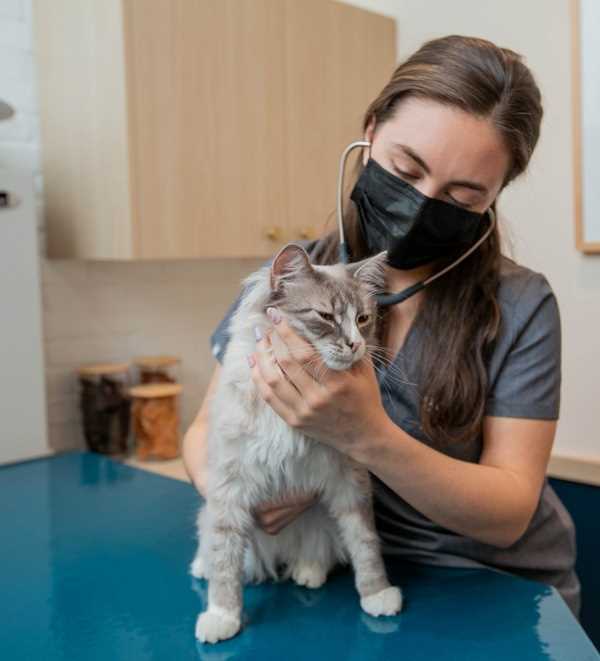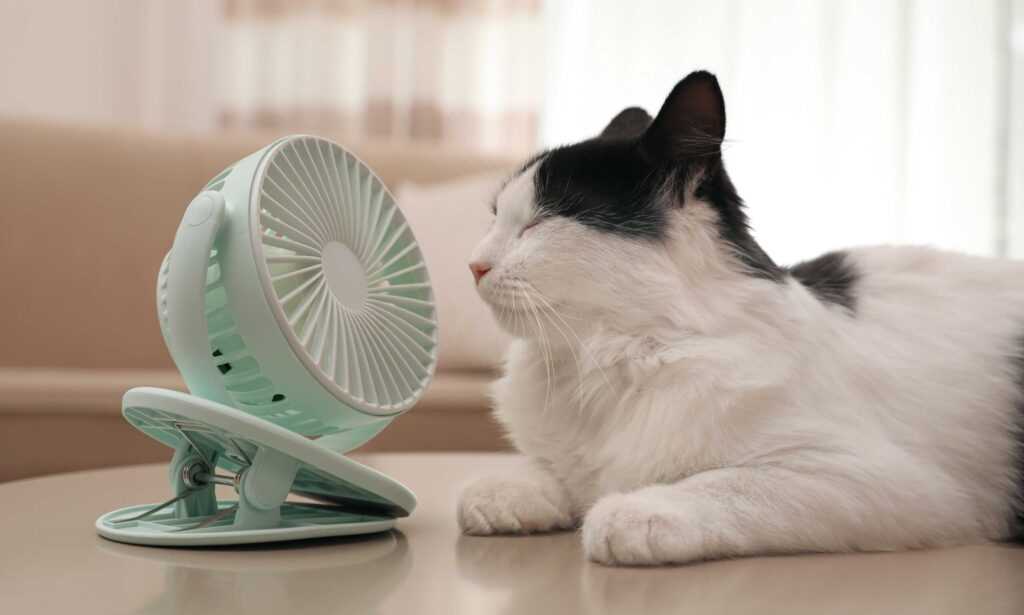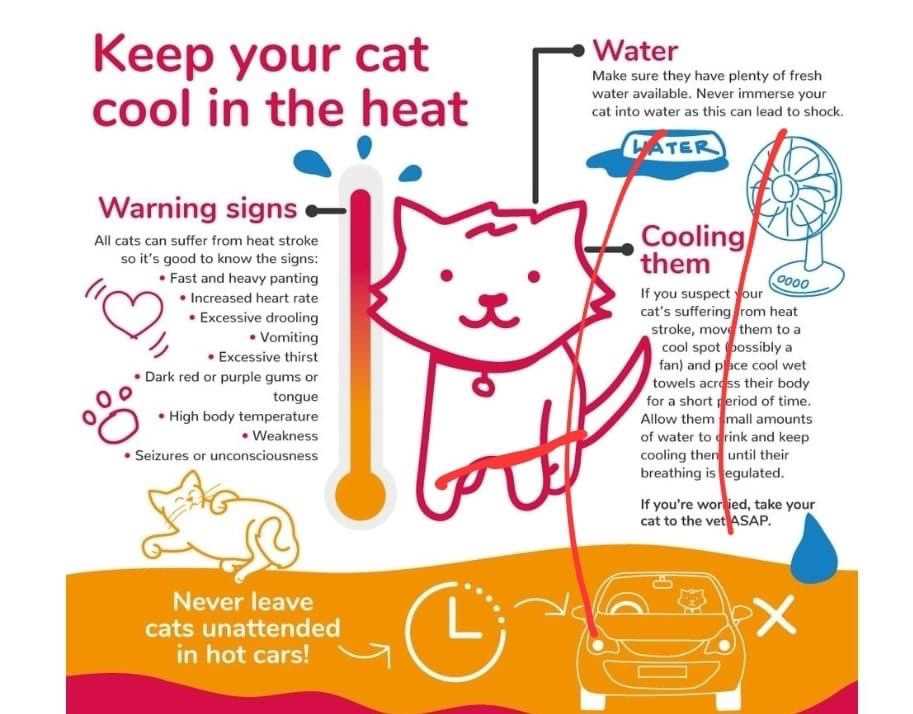

As a Scottish Fold with my own online presence, I’ve learned a thing or two about temperature and how it affects us furry creatures. A typical feline can comfortably handle temperatures ranging from 60°F to 80°F (15°C to 27°C). Beyond this range, things start to get tricky. It’s crucial to keep an eye on the thermometer, especially during hotter months.
When the environment reaches 90°F (32°C) and above, a risk of overheating kicks in. Signs to watch for include excessive panting, drooling, and lethargy. If you notice any of these symptoms, it’s time to act quickly. Providing plenty of fresh water and a cool, shaded area helps immensely. Remember, hydration is key!
Also, never leave us in parked vehicles, even for a short time. Temperatures inside can soar rapidly, leading to serious health risks. Being aware of our comfort levels can make all the difference in keeping us happy and healthy!
Temperature Tolerance in Felines

My fur keeps me cozy, but when it comes to temperature, there’s a limit. The normal body temperature for a feline is between 100.5°F and 102.5°F (38.1°C to 39.2°C). If it rises above this range, it can lead to overheating.
Signs of Excessive Heat
When I feel too warm, I exhibit specific behaviors. If you notice me panting, seeking shade, or drinking more water, it’s a sign I’m struggling with the heat. My heart rate may also increase, and I might become lethargic. If I start drooling or show signs of distress, it’s essential to cool me down immediately.
Staying Cool

Provide me with fresh water and a cool place to rest. If the temperature rises significantly, consider using a damp cloth on my fur or placing a fan nearby. Make sure I don’t overexert myself during hot days. Remember, I can’t regulate my body temperature as well as humans can.
If you’re curious about my growth, check out this link: how long do male cats grow.
Understanding Normal Body Temperature in Cats
The typical body temperature for felines ranges from 100.5°F to 102.5°F (38.1°C to 39.2°C). Regular monitoring is essential for maintaining health.
To gauge temperature accurately:
- Utilize a digital rectal thermometer for precise readings.
- Ensure the thermometer is lubricated for comfort.
- Insert gently, about an inch, and wait for the beep.
Signs of elevated body temperature include:
- Increased panting or rapid breathing.
- Lethargy or reduced activity levels.
- Loss of appetite or unusual behavior.
If the reading exceeds 102.5°F, it’s advisable to consult a veterinarian for further evaluation. Persistent high temperatures may indicate underlying health issues that require attention.
Hydration plays a critical role in regulating temperature. Access to fresh water is vital, especially during warmer periods. If you notice excessive thirst or changes in drinking habits, seek veterinary advice.
Maintaining a comfortable environment is key. Provide shaded areas and avoid direct sunlight exposure during peak hours. Indoor cooling solutions, such as fans or air conditioning, can significantly contribute to well-being.
Regular health check-ups help in early detection of potential abnormalities. Keep track of any changes in behavior or physical condition, as these can signal health concerns requiring prompt attention.
Identifying Signs of Overheating in Felines

Watch for excessive panting, which is a clear indicator of discomfort. If you notice me struggling to breathe normally, it’s a signal that my body temperature is rising. Increased drooling might also occur, so keep an eye on my saliva production.
Behavior changes can reveal a lot. If I become lethargic and seek out cool surfaces, it’s a sign that I’m trying to cope with the heat. Additionally, if I refuse to eat or drink, this is concerning. Always check for signs of distress, like restlessness or agitation.
Monitor my grooming habits; excessive grooming can lead to skin irritation. If you see me panting with my mouth open or my tongue hanging out, it’s time to intervene. Providing a cool space and fresh water is essential.
Here’s a quick reference table for identifying overheating signs:
| Sign | Description |
|---|---|
| Panting | Rapid breathing with an open mouth |
| Excessive Drooling | Increased saliva production |
| Lethargy | Unusual tiredness and reduced activity |
| Refusal to Eat/Drink | Loss of appetite or hydration |
| Restlessness | Inability to settle down or relax |
If you’re looking for ways to support my health during warmer months, consider checking out what is the best cat food for older cats. Proper nutrition aids in overall well-being, especially when temperatures rise.
Best Practices for Keeping Your Cat Cool
Provide plenty of fresh water. Hydration is key for maintaining comfort. Use multiple bowls around the house to encourage drinking.
Set up shaded areas. Create cool spots using blankets, towels, or pet mats in areas where sunlight hits. This gives me a cozy retreat during warm days.
Utilize fans or air conditioning. Keeping the environment breezy helps regulate temperature. Position a fan near my resting area for a refreshing airflow.
Maintain a Comfortable Environment
Limit outdoor time during peak sun hours. Early mornings or evenings are ideal for outdoor exploration without overheating risks.
Groom regularly. Brushing removes excess fur, which helps in temperature regulation. A neat coat allows for better airflow and comfort.
Monitor Activity Levels
Engage in gentle play sessions. Avoid vigorous activities during high temperatures. Interactive toys can keep me entertained without excessive exertion.
Pay attention to my behavior. If I seem lethargic or seek out cooler areas, it’s a sign to adjust the surroundings for my comfort.
Video:
As a Scottish Fold with my own online presence, I’ve learned a thing or two about temperature and how it affects us furry creatures. A typical feline can comfortably handle temperatures ranging from 60°F to 80°F (15°C to 27°C). Beyond this range, things start to get tricky. It’s crucial to keep an eye on the thermometer, especially during hotter months.
When the environment reaches 90°F (32°C) and above, a risk of overheating kicks in. Signs to watch for include excessive panting, drooling, and lethargy. If you notice any of these symptoms, it’s time to act quickly. Providing plenty of fresh water and a cool, shaded area helps immensely. Remember, hydration is key!
Also, never leave us in parked vehicles, even for a short time. Temperatures inside can soar rapidly, leading to serious health risks. Being aware of our comfort levels can make all the difference in keeping us happy and healthy!
Temperature Tolerance in Felines

My fur keeps me cozy, but when it comes to temperature, there’s a limit. The normal body temperature for a feline is between 100.5°F and 102.5°F (38.1°C to 39.2°C). If it rises above this range, it can lead to overheating.
Signs of Excessive Heat
When I feel too warm, I exhibit specific behaviors. If you notice me panting, seeking shade, or drinking more water, it’s a sign I’m struggling with the heat. My heart rate may also increase, and I might become lethargic. If I start drooling or show signs of distress, it’s essential to cool me down immediately.
Staying Cool

Provide me with fresh water and a cool place to rest. If the temperature rises significantly, consider using a damp cloth on my fur or placing a fan nearby. Make sure I don’t overexert myself during hot days. Remember, I can’t regulate my body temperature as well as humans can.
If you’re curious about my growth, check out this link: how long do male cats grow.
Understanding Normal Body Temperature in Cats
The typical body temperature for felines ranges from 100.5°F to 102.5°F (38.1°C to 39.2°C). Regular monitoring is essential for maintaining health.
To gauge temperature accurately:
- Utilize a digital rectal thermometer for precise readings.
- Ensure the thermometer is lubricated for comfort.
- Insert gently, about an inch, and wait for the beep.
Signs of elevated body temperature include:
- Increased panting or rapid breathing.
- Lethargy or reduced activity levels.
- Loss of appetite or unusual behavior.
If the reading exceeds 102.5°F, it’s advisable to consult a veterinarian for further evaluation. Persistent high temperatures may indicate underlying health issues that require attention.
Hydration plays a critical role in regulating temperature. Access to fresh water is vital, especially during warmer periods. If you notice excessive thirst or changes in drinking habits, seek veterinary advice.
Maintaining a comfortable environment is key. Provide shaded areas and avoid direct sunlight exposure during peak hours. Indoor cooling solutions, such as fans or air conditioning, can significantly contribute to well-being.
Regular health check-ups help in early detection of potential abnormalities. Keep track of any changes in behavior or physical condition, as these can signal health concerns requiring prompt attention.
Identifying Signs of Overheating in Felines

Watch for excessive panting, which is a clear indicator of discomfort. If you notice me struggling to breathe normally, it’s a signal that my body temperature is rising. Increased drooling might also occur, so keep an eye on my saliva production.
Behavior changes can reveal a lot. If I become lethargic and seek out cool surfaces, it’s a sign that I’m trying to cope with the heat. Additionally, if I refuse to eat or drink, this is concerning. Always check for signs of distress, like restlessness or agitation.
Monitor my grooming habits; excessive grooming can lead to skin irritation. If you see me panting with my mouth open or my tongue hanging out, it’s time to intervene. Providing a cool space and fresh water is essential.
Here’s a quick reference table for identifying overheating signs:
| Sign | Description |
|---|---|
| Panting | Rapid breathing with an open mouth |
| Excessive Drooling | Increased saliva production |
| Lethargy | Unusual tiredness and reduced activity |
| Refusal to Eat/Drink | Loss of appetite or hydration |
| Restlessness | Inability to settle down or relax |
If you’re looking for ways to support my health during warmer months, consider checking out what is the best cat food for older cats. Proper nutrition aids in overall well-being, especially when temperatures rise.
Best Practices for Keeping Your Cat Cool
Provide plenty of fresh water. Hydration is key for maintaining comfort. Use multiple bowls around the house to encourage drinking.
Set up shaded areas. Create cool spots using blankets, towels, or pet mats in areas where sunlight hits. This gives me a cozy retreat during warm days.
Utilize fans or air conditioning. Keeping the environment breezy helps regulate temperature. Position a fan near my resting area for a refreshing airflow.
Maintain a Comfortable Environment
Limit outdoor time during peak sun hours. Early mornings or evenings are ideal for outdoor exploration without overheating risks.
Groom regularly. Brushing removes excess fur, which helps in temperature regulation. A neat coat allows for better airflow and comfort.
Monitor Activity Levels
Engage in gentle play sessions. Avoid vigorous activities during high temperatures. Interactive toys can keep me entertained without excessive exertion.
Pay attention to my behavior. If I seem lethargic or seek out cooler areas, it’s a sign to adjust the surroundings for my comfort.
Video:
As a Scottish Fold with my own online presence, I’ve learned a thing or two about temperature and how it affects us furry creatures. A typical feline can comfortably handle temperatures ranging from 60°F to 80°F (15°C to 27°C). Beyond this range, things start to get tricky. It’s crucial to keep an eye on the thermometer, especially during hotter months.
When the environment reaches 90°F (32°C) and above, a risk of overheating kicks in. Signs to watch for include excessive panting, drooling, and lethargy. If you notice any of these symptoms, it’s time to act quickly. Providing plenty of fresh water and a cool, shaded area helps immensely. Remember, hydration is key!
Also, never leave us in parked vehicles, even for a short time. Temperatures inside can soar rapidly, leading to serious health risks. Being aware of our comfort levels can make all the difference in keeping us happy and healthy!
Temperature Tolerance in Felines

My fur keeps me cozy, but when it comes to temperature, there’s a limit. The normal body temperature for a feline is between 100.5°F and 102.5°F (38.1°C to 39.2°C). If it rises above this range, it can lead to overheating.
Signs of Excessive Heat
When I feel too warm, I exhibit specific behaviors. If you notice me panting, seeking shade, or drinking more water, it’s a sign I’m struggling with the heat. My heart rate may also increase, and I might become lethargic. If I start drooling or show signs of distress, it’s essential to cool me down immediately.
Staying Cool

Provide me with fresh water and a cool place to rest. If the temperature rises significantly, consider using a damp cloth on my fur or placing a fan nearby. Make sure I don’t overexert myself during hot days. Remember, I can’t regulate my body temperature as well as humans can.
If you’re curious about my growth, check out this link: how long do male cats grow.
Understanding Normal Body Temperature in Cats
The typical body temperature for felines ranges from 100.5°F to 102.5°F (38.1°C to 39.2°C). Regular monitoring is essential for maintaining health.
To gauge temperature accurately:
- Utilize a digital rectal thermometer for precise readings.
- Ensure the thermometer is lubricated for comfort.
- Insert gently, about an inch, and wait for the beep.
Signs of elevated body temperature include:
- Increased panting or rapid breathing.
- Lethargy or reduced activity levels.
- Loss of appetite or unusual behavior.
If the reading exceeds 102.5°F, it’s advisable to consult a veterinarian for further evaluation. Persistent high temperatures may indicate underlying health issues that require attention.
Hydration plays a critical role in regulating temperature. Access to fresh water is vital, especially during warmer periods. If you notice excessive thirst or changes in drinking habits, seek veterinary advice.
Maintaining a comfortable environment is key. Provide shaded areas and avoid direct sunlight exposure during peak hours. Indoor cooling solutions, such as fans or air conditioning, can significantly contribute to well-being.
Regular health check-ups help in early detection of potential abnormalities. Keep track of any changes in behavior or physical condition, as these can signal health concerns requiring prompt attention.
Identifying Signs of Overheating in Felines

Watch for excessive panting, which is a clear indicator of discomfort. If you notice me struggling to breathe normally, it’s a signal that my body temperature is rising. Increased drooling might also occur, so keep an eye on my saliva production.
Behavior changes can reveal a lot. If I become lethargic and seek out cool surfaces, it’s a sign that I’m trying to cope with the heat. Additionally, if I refuse to eat or drink, this is concerning. Always check for signs of distress, like restlessness or agitation.
Monitor my grooming habits; excessive grooming can lead to skin irritation. If you see me panting with my mouth open or my tongue hanging out, it’s time to intervene. Providing a cool space and fresh water is essential.
Here’s a quick reference table for identifying overheating signs:
| Sign | Description |
|---|---|
| Panting | Rapid breathing with an open mouth |
| Excessive Drooling | Increased saliva production |
| Lethargy | Unusual tiredness and reduced activity |
| Refusal to Eat/Drink | Loss of appetite or hydration |
| Restlessness | Inability to settle down or relax |
If you’re looking for ways to support my health during warmer months, consider checking out what is the best cat food for older cats. Proper nutrition aids in overall well-being, especially when temperatures rise.
Best Practices for Keeping Your Cat Cool
Provide plenty of fresh water. Hydration is key for maintaining comfort. Use multiple bowls around the house to encourage drinking.
Set up shaded areas. Create cool spots using blankets, towels, or pet mats in areas where sunlight hits. This gives me a cozy retreat during warm days.
Utilize fans or air conditioning. Keeping the environment breezy helps regulate temperature. Position a fan near my resting area for a refreshing airflow.
Maintain a Comfortable Environment
Limit outdoor time during peak sun hours. Early mornings or evenings are ideal for outdoor exploration without overheating risks.
Groom regularly. Brushing removes excess fur, which helps in temperature regulation. A neat coat allows for better airflow and comfort.
Monitor Activity Levels
Engage in gentle play sessions. Avoid vigorous activities during high temperatures. Interactive toys can keep me entertained without excessive exertion.
Pay attention to my behavior. If I seem lethargic or seek out cooler areas, it’s a sign to adjust the surroundings for my comfort.








